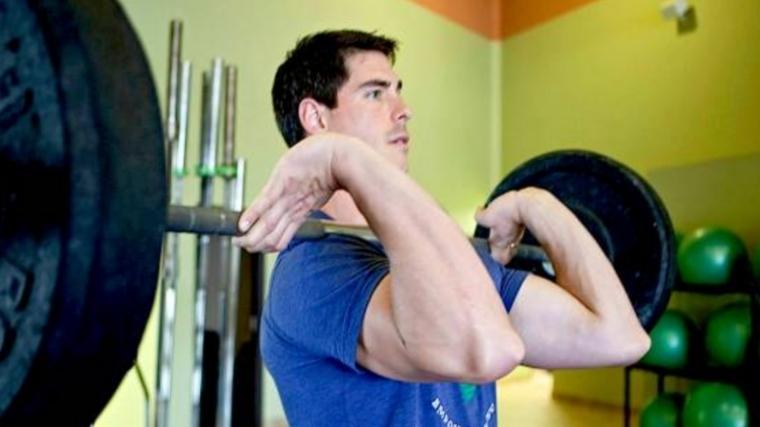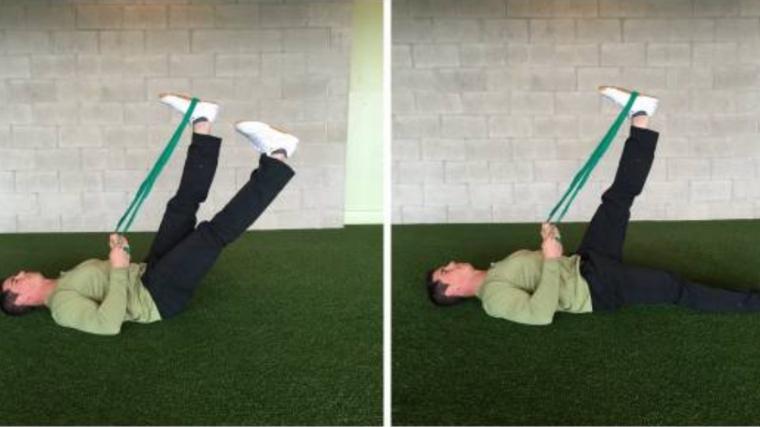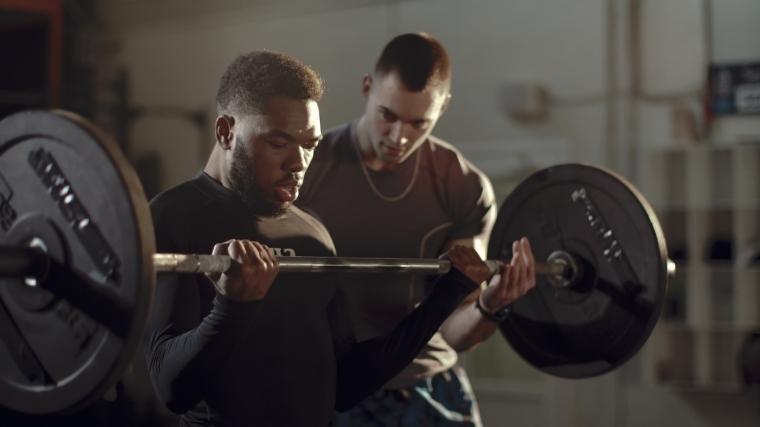Mass information in the fitness industry is a beautiful thing; it enables coaches and the general population to learn at a high rate. However, mass information can also lead to mass confusion. Figuring out how to train oneself and others can be a rollercoaster ride — and not always a fun one.


Thankfully, the intentions behind this industry chatter are typically genuine. Coaches want to help clients achieve results, and the general public is simply looking to feel better. However, amidst the confusion is a growing need for the fitness industry to develop a common language that both professionals and consumers can understand. And that common language should focus on helping society move better and more often for the long haul.
Changing the language of the industry may feel like an impossible task, but two principles are undeniable:
- Put movement quality first.
- Help people move more.
Regardless of your goals (muscle hypertrophy, strength, performance, etc.), these two factors are critical for the industry to head in the right direction. A movement-based approach to training has the potential for magic, and it needs to start in gym class for kids. The lack of a proprioceptive-enriched movement lifestyle for children is a major concern for society.
However, it is never too late to restore what Gray Cook calls “movement competency.” Here is Gray’s definition of how to find movement competency:
This we test with movement screening. If screening reveals pain or dysfunction in the form of limitation or asymmetry, there is a movement competency problem. Alternatively, there is a basic movement-aptitude problem—pick your term, but make the point. Adequate competency suggests acceptable fundamental-movement quality.
Achieving movement competency will be hard if we focus our fitness programs purely on looking better. I am a bodybuilder at heart and have worked on building bigger muscles and looking better since I was 15. Fast-forward almost 20-years and I have realized that my chase for aesthetics has left me with faulty movement patterns. I am now forced to work on improving my movement competency instead of working on looking good.
This doesn’t mean that I will never be able to work out for aesthetics, but I do need to earn the right to make that the sole focus of my training. Building muscle is increasingly important as you age, but you can still have a high-level of movement competency at any fitness level. Building muscle and getting stronger should be your main goal, once you start moving well.
A Catalyst for Change
This was my catalyst for developing a movement-based approach to hypertrophy training. In the past, bodybuilders would maybe perform light static stretching, five minutes on a cardio machine, and a few warm-up sets before jumping into a 25-set workout of chest and triceps. Young lifters without a lot of miles on their body can get away with this method for a while, but this approach may eventually leave you with asymmetries, injuries, pain, and frustratingly slow progress.
You don’t have to be in your fifties to have an old training age. As Dan John says, “It’s not the years, it’s the miles.” I have been training hard for almost 20-years with a week off here and there, but not often. The miles are deep in this young body.
If you want to last in the lifting game for the long run, endless sets of eight to 15 reps per body part may not be what your body needs. So, what should a person chasing a bodybuilding-type physique do instead of the typical splits? Revisit and master fundamental human movements and do them with realistic sets, reps, and loads. If you focus on moving better first, you will be surprised how fast your body will be able to get back to lifting heavy objects, often.
A Collaborative Design
Like any other trainer or strength coach, my philosophy has evolved over the years. These days, I follow philosophies of various tried-and-true methods.
Functional Movement Systems (FMS) is a useful approach to understand movement baselines and exercise modifications. Most people would benefit from an FMS screening. Along with a detailed health history at intake, FMS provides a solid foundation when designing programs. For the beginner or veteran, the fundamentals are where you start and finish.
Every strength and muscle hypertrophy program should include some variation of the following movements depending on the goal of the individual. This list is largely inspired by the legendary Dan John:
- Push: push-ups, bench press, overhead press
- Pull: dumbbell row, inverted row, chin-ups, pull ups
- Squat: goblet squat, front squat, back squat, single-leg squat
- Hinge: deadlift, kettlebell swing, single-leg deadlifts, Olympic lifts
- Loaded Carry: farmer’s carry, suit case carry, overhead carry, sandbag carry
- Groundwork: rocking, rolling, creeping, crawling, Turkish get-ups
- Core/Rotation/Anti-rotation: ab wheel rollouts, cable press outs, chops, lifts
The New Age Bodybuilding Template
Below is a foundational hypertrophy template that consists of lifting 3 days per week for 6 weeks. Dividing your strength and conditioning into four to six week phases will keep your body fresh, resilient, and improve general physical preparedness. This length of time seems to be the sweet spot, since most people have what I call “Exercise ADD.”
Program Components:
- Correctives
- Movement Preparation
- Lift Weights
- Finisher
Correctives
Correctives are based off of FMS and health history. For example, a perfect score for an Active Straight Leg is 3/3, 0 for pain. Your goal should be to achieve symmetry (a score of 2/2 or 3/3). If your score is 2/1, the following corrective exercises will use core and motor control to improve alternating hip flexion and extension.


- Alligator Breathing: Lay down in a comfortable position for 2-3 minutes. I prefer on the stomach to feel the abdominal wall. Breathe in and out through your nose. Focus on pulling air deep into your belly. It may help to imagine pulling air down into your feet.
- Assisted Leg Lowering: 10 reps each leg
- Cook Hip Lift: 5 x 10-second holds each side
Movement Preparation
Before you begin your workout spend 5-10 minutes on the following movement preparations:
- Kettlebell arm bars: 5 each side
- Half-kneeling kettlebell halos: 10 reps
- Goblet squat w/prying knees: 5 reps
- Lunge Matrix: 6 reps
- Plank to Down Dog: 10 reps (not in video)
- Inch Worm: 10 reps (not in video)
- Jump Rope: 2-5 minutes (not in video)
Lift Weights
Below are the rep rotations for the three lifting days. Organize your week so that you don’t lift two days in a row.
- Monday (or Tuesday): 5 x 5
- Wednesday (or Thursday): 8 x 3
- Friday (or Saturday): 3 x 8-12
The following exercise options are based on the fundamental movement patterns:
- Push: One-arm kettlebell press, single-arm bench press, push-ups
- Pull: Inverted row, chin-ups
- Squat: Goblet Squat, single-leg squat, front squats
- Hinge: Deadlift, single-leg deadlift, kettlebell swing
- Loaded Carry: farmer’s walk, suitcase carry
- Ground Work: Turkish get ups, crawling and rolling
- Core (rotation/anti-rotation): McGill Big 3, rollouts, anti-rotation press outs
Finisher
Pick one conditioning finisher per training session:
- Air Bike Sprints: 6-8 rounds of 30 seconds on, 30 seconds off
- Concept 2 Rower: 1,000 meters
- Ski Erg Sprints: 3 rounds of 1-minute on, rest 2 minutes in between sprints
- Sled Push/Pull: 5 x 50 yards
- Battling Ropes: 8 x 20 reps for 2 arm slams. Rest 30 seconds between sets.
Cool-Down
Proper recovery will provide your body with a better base to keep building muscle for the long haul. Before you skip out of the gym after your workout, run through this cool-down routine:
- Alligator breathing: 2 minutes
- Head nods: 10 reps up and down and 10 reps side to side
- Bird dogs: 10 reps/side
- Rock backs: 20 reps
- Egg rolls: 20 reps
- Get up and down off of the ground: 5-10 reps
- Baby crawling, Spiderman crawling: 30-40 yards each
Change Is Here
I will always be a meathead at heart. I love bodybuilding and I am amazed at the amount of weight powerlifters can move. But the “pedal to the metal” workouts eventually take their toll.
If we continue to direct the general public towards endless sets of body-part split workouts, force Olympic lifting on people who are not ready and may never be ready to perform, and max out on the squat, deadlift, and bench press, the long haul may never come. Let’s focus on keeping people moving instead.









